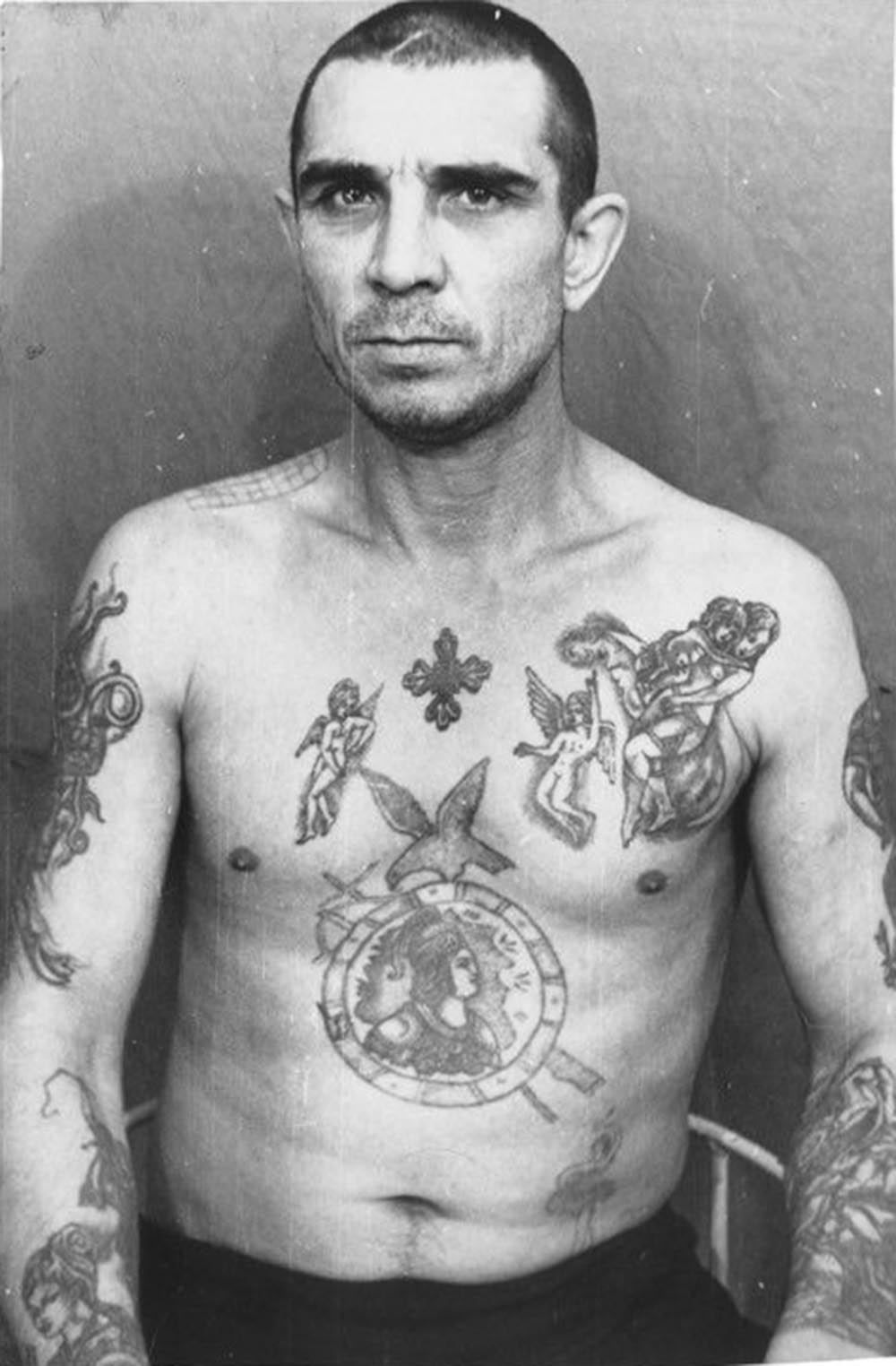During the 20th century in the Soviet Union, Russian criminal and prison communities maintained a culture of using tattoos to indicate members’ criminal career and ranking. Specifically among those imprisoned under the Gulag system of the Soviet era, the tattoos served to differentiate a criminal leader or thief in law from a political prisoner. The practice grew in the 1930s, peaking in the 1950s and declining in popularity in the 1970s and 1980s.
Russian criminal tattoos
